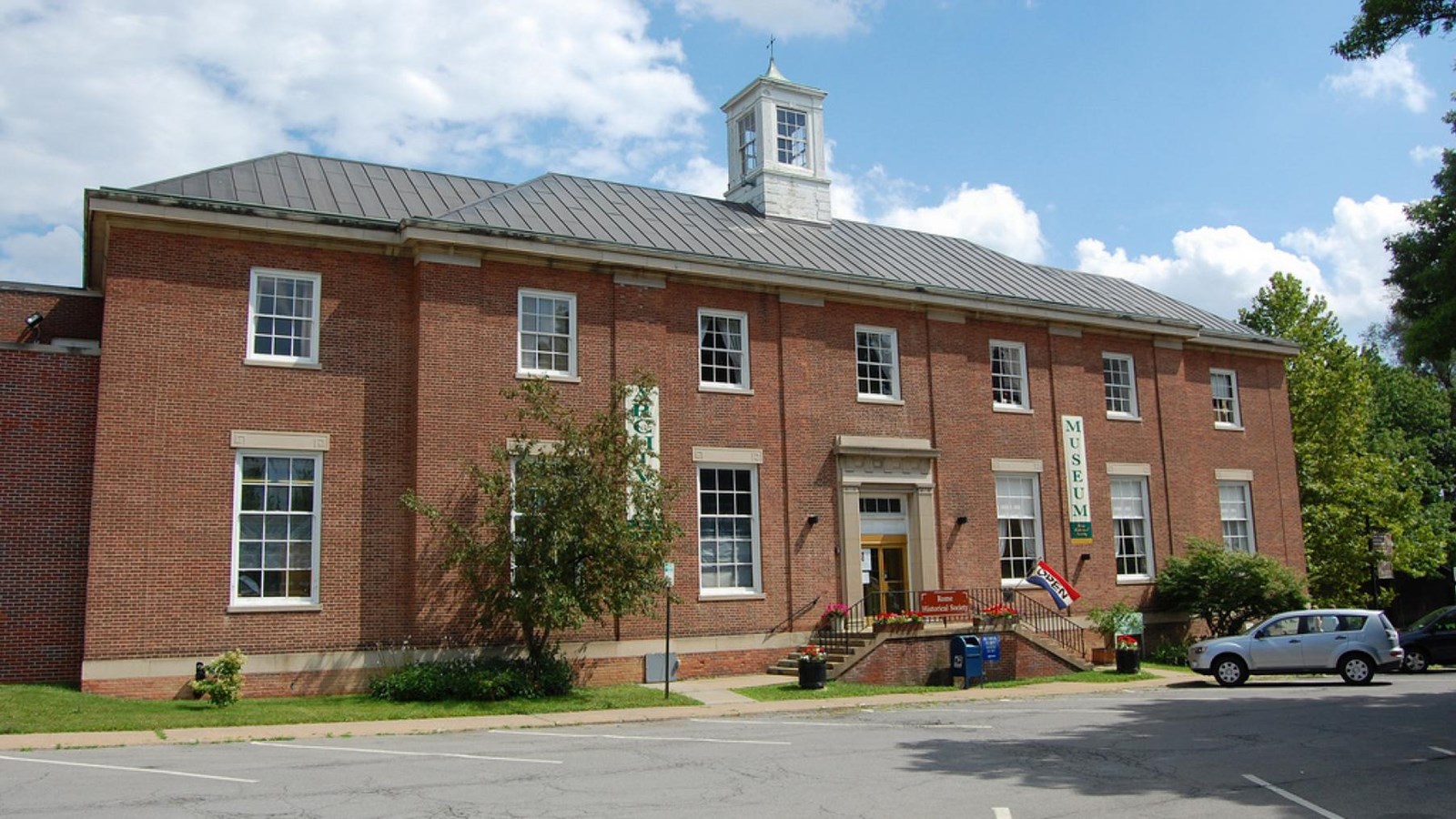Last updated: March 21, 2025
Place
Rome Historical Society

Historical/Interpretive Information/Exhibits, Information, Restroom
The Rome Historical Society - Friends of the Fort sits next to the grounds of Fort Stanwix National Monument. This free museum has exhibits related to the historic fort, the Erie Canal, the history of Rome, NY, and more! Check the main website for museum hours and research information.
In 1936, America was still struggling through the Great Depression and attempting to right itself in a world that, in the aftermath of World War I, was rapidly becoming more “global.” Technological advances were fundamentally and continuously altering the fabric of American life, alongside sweeping social changes. It’s not surprising that, out of this moment in history, Americans began to really study matters of American history and American culture.
One man with such an urge to examine and preserve the history of American life was Edwin D. Bevitt, the Executive Secretary of the Rome Area Chamber of Commerce. The history of Rome is a long one, with a number of historic sites and interests he felt were not only important to this area, but to American history as a whole. On February 20, 1936, he called a meeting of some of Rome’s most socially and civically minded citizens, to discuss the founding of what would become the Rome Historical Society. This crowd of citizens didn’t require much persuading, and immediately set to work drafting a charter. After many hours of hard work donated by countless people, the Rome Historical Society was granted its provisional charter on September 21, 1936, and a museum was opened in the third floor of the Jervis Public Library, located at 613 North Washington Street. The Rome Historical Society would be granted its absolute charter in 1944.
Since receiving its charter, the Rome Historical Society has operated from a number of historic locations. In 1958, Mrs. Alexander Rutherford gifted the Society with the former armory building at 117 East Dominick Street for use as the Fort Stanwix Museum. This building was vacated in 1970 to make way for the construction of Fort Stanwix National Park and other Urban Renewal projects. During the Urban Renewal years, the Society operated from a number of temporary locations, first at a former supermarket building at 112 Spring Street from 1970 to 1974, and then at the Lunger House at 113 West Court Street until 1980.
It was in 1980 that the Rome Historical Society would purchase its present location at 200 Church Street. This building was a former United States Post Office, built in 1936 as a part of the New Deal projects being constructed across America, the same year as the Society’s founding. After extensive renovations, the Society’s museum reopened in 1985 and has since operated uninterrupted.
From 200 Church Street, the Rome Historical Society operates a 3,700 square foot museum with both permanent and rotating exhibits. These exhibits are based on our collection of more than 40,000 items, carefully preserved in 8,400 square foot artifact storage. The William E. Scripture Research Library is home to more than 10,000 archived books, documents, photographs, and paper records to aid curious genealogists, home and business owners, and seasoned historians alike.
The Rome Historical Society was chartered by the State Board of Regents in 1936, the thoughtful undertaking of a number of civically engaged Romans. Their goal was ultimately simple: to foster the study of the historic city of Rome, New York, and to share that history with as many other people as possible
At the Rome Historical Society, you can discover the ways Rome has adapted, grown, and changed over time, from its days as a place of portage for colonial traders to its early fortifications like Fort Bull and Fort Stanwix, from a small town briefly named Lynchville to the industrious city of Rome that supplied one-tenth of the world’s copper and was home to Griffiss Air Force Base. The study of Rome, the City of American History, is a densely layered look at what it means to be American, from our earliest colonial history to our global present—and beyond.
The Rome Historical Society runs a wide variety of lectures, book signings and other events in their 95-seat Stevens-Kingsley Foundation Auditorium. Also installed in the auditorium is the “Our Goodly Heritage” diorama, a multimedia presentation on Rome’s long and richly storied history.
In autumn of 2015 the Rome Historical Society became the official Friends Group of Fort Stanwix National Monument. As a Friends Group we support the mission of the National Park Service to preserve unimpaired the natural and cultural resources and values of the National Park System for the enjoyment, education, and inspiration of this and future generations. This means that Rome Historical Society can accept charitable donations on behalf of Fort Stanwix National Monument to advance mutually beneficial goals.
Our role as a Friends Group not only allows us to solicit and accept philanthropic contributions on behalf of Fort Stanwix National Monument, but also allows us to conduct collaborative strategic planning, share resources, partner in the development of exhibits, conduct joint programming, and more.
In addition to the Church Street Location, the Rome Historical Society owns and maintains three additional historic sites: The Lower Landing Place, Fort Bull/Wood Creek, and The Tomb of the Unknown Soldiers of the American Revolution. Please see our Historic Sites page to learn more about these locations.
-
40 for 40: Tomb of the Unknown Revolutionary War Soldiers
Adjacent to Fort Stanwix National Monument sits the Tomb of the Unknown Revolutionary War Soldiers. Designed by the same person that created the Tomb of the Unknowns at Arlington National Cemetery, it was dedicated on July 4, 1976.
- Duration:
- 1 minute, 14 seconds
Success
Thank you. Your feedback has been received.
Error
alert message








